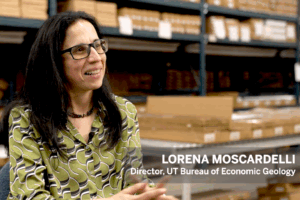Name: Brian Stross
Title: Professor, Department of Anthropology
Years at the university: 40 years
Education: B.A. and Ph.D. in anthropology from the University of California at Berkeley (subfields: linguistics, psychological anthropology, Mesoamerica)
Hometown: Berkeley, Calif.
When did you become interested in the anthropology of food?
Several years ago while living and eating in an indigenous Mayan community for the purpose of studying language acquisition in Chiapas, Mexico. I came to see how pervasively food practices are woven into the fabric of many institutions and symbol systems of a society. People are not only what they eat, but how they harvest and prepare what they eat, how they eat it and how they discard what is left over. Indigenous Mesoamericans, for example, have seen themselves as made of maize, and many aspects of their lives are actually dictated by the production and consumption of maize. I decided then to devote some attention to the anthropology of food.
What are some interesting cultural food taboos?
One example would be the American taboo on eating cockroaches (which is surely part of a more general taboo on eating insects and arachnids). Elsewhere this is not necessarily the case. In Oaxaca and other parts of Mexico, for example, grasshoppers are eaten with relish, as are a number of other insects (witness the agave worm found in bottles of some tequilas). There also seems to be an American taboo, not observed by all Americans of course, on eating horse meat, and all the while America has been the largest exporter of horse meat for food to other parts of the world. Another example of a food related taboo would be the American stricture that after eating one should wait 20 minutes to half an hour before going swimming (to avoid) cramping up and drowning. A somewhat similar practice is found in the Dominican Republic, where following a meal one is not supposed to engage for a while (perhaps half an hour to an hour) in most any activity (including sleeping, sex, showering, running or reading).
Are there any unique food meanings specific to Texas?
There may be some, but I haven’t made a study of the subject so I can’t think of any that are completely unique to Texas. The first thing I think of however, is Texas barbecue. Clearly this is related to the cattle industry and ultimately to Texas having once been a part of Mexico.The emergence of a unique regional cuisine, Tex-Mex, is certainly an important cultural hybrid to consider, and one whose name suggests a deep involvement with Texas. Next I think of Kolaches, the delightful pastries the introduction of which is connected to the Czech component of the Texas population. Barbecue, Tex-Mex cuisine, and Kolaches are not restricted to Texas, of course, but they do seem to be stereotypically Texan, at least for Texans, and for many, but definitely not all peoples outside of Texas. Texas is also noted for the production of sweet onions, the consumption of iced tea and having meat for breakfast as a norm.
What culture has the most unusual food, food preferences or taboos?
As anthropologists, we assess cultural practices in their own right, not within a comparative value scale. Although all food practices are interesting, I have a hard time thinking of many of them in terms of unusual, unique, or weird, but I’ll make a stab at it.
One striking practice is found in Venezuela where some indigenous groups drink a plantain soup mixed with bones and ashes of dead family members. In several African nations earth in the form of clay is mined and formed into little bars that are sold and eaten. On a more somber note, in Haiti mud and clay is mixed with salt and lard and shaped into pie shaped “cookies” that are eaten in hard times by those who are hungry and who have little or nothing to buy food with.
An interesting perspective was maintained a few decades ago in parts of New Guinea, where a family would feast on the body parts of a dead relative — if they had not died of a disease — as a means of honoring their dead while also acquiring some precious and tasty protein. Another is that of British subjects and even kings, only a couple of hundred years ago, who ate parts of mummies and other dead people, including sometimes the private parts, for medicinal purposes. And today in Britain, as well as elsewhere there are individuals who fry and eat the placenta of the child to whom they had only that day given birth. It is said by these persons that the placenta tastes like liver and has many vital nutrients that are good for the health of the new mother.
Does culture influence the food we eat?
I would say that culture very much influences the food that we eat, what we think is tasty, how we think it should be prepared, how we might use food to win friends or make enemies both individually and as a society, what we think is appropriate to eat in church, at a wedding, in a restaurant, or at home, what we think of people who eat foods that we think are inedible (for example, snakes, or rats, or caterpillars); and it influences many, many other aspects of the food we eat. The food we eat also very much influences the culture that we have. Notice how different the ways that agriculturalists live from the ways that pastoralists live; or fisher-peoples, or hunters and gatherers. In sum, our diet influences our cultural practices, and our cultural practices influence our diet, our cuisine, and other food related cultural practices.
How does capitalism influence what we eat?
Capitalism has some obvious and strong influences on what we eat today, where we eat, and how we eat. To be clear, let me answer in the context of capitalism as an economic system in which there is private and corporate ownership, for profit, of goods and their production and services. We can certainly trace the different foods in various eating venues to food costs and to a class system tied to wealth and poverty. Fast food, eating out, obesity, the amount of meat that is eaten, various food related diseases, and a plethora of other things having to do with what we eat are easily relatable to capitalism.



